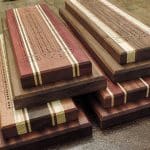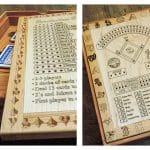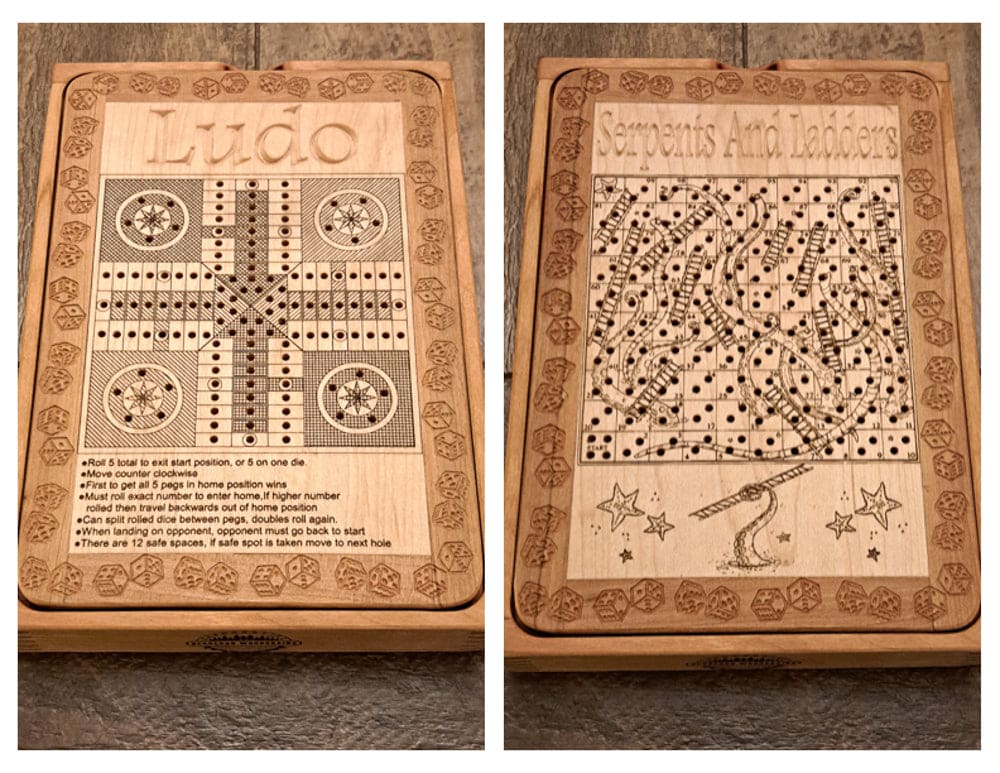Free Shipping On Orders Over $150 To Canada And US
Hand and Foot Canasta Rules
Hand and Foot Canasta Rules
Setup:
Hand and Foot is a version of Canasta where each player is dealt two sets of 13 cards, known as the “hand” and the “foot”. The rest of the cards are put in a pile. The top card is placed face-up as the discard pile. If it is wild or a red 3, put another card on top of it.
The game is usually played by four players in two teams. It can also be played with 2-8 players individually or in teams.
Use one deck more than the number of players including all jokers. Twos and jokers are wild.
Each player plays from their “hand”, while leaving the “foot” face-down on the table. The “Foot” is not used until the “hand” is empty.
A game is played for four rounds.
Canastas / Books:
In Hand and Foot, a canasta (a meld of seven cards the same rank) can be called a book and can’t be added to, it is closed.
A red book has only natural cards (no wildcards). When you make a red book, square up the cards into a pile and top it with a red card. Some refer to this as a clean canasta.
A black book contains a mixture of natural and fewer wild cards. When you make a black book, square up the cards into a pile and top it with a black card. Some refer to this as a dirty canasta.
A wild book contains only wild cards (twos and jokers in any combination). When you make a wild book, square up the cards into a pile and top it with a wild card. Referred to as wild canasta.
Special Cards:
Red 3’s are bonus cards. When a red 3 is drawn, the card is put down on the table in front of the player, and the player draws a replacement card. If a red 3 is taken from a discard pile, it is not replaced. Red 3 points can only be scored if a meld was completed by the end of the game.
By discarding a Black 3 you prevent the next player from taking the discard pile. However, Black 3s do not freeze the pile. After the Black 3 has been covered by another card, it has no further effect. Freezing the deck occurs if a team has not made a meld or if there is a wild or red three in the deck, turned sideways to view it. When the deck is frozen a player may take the pile only if the top card can be used in a meld with 2 natural cards from their hand.
Play:
When drawing from the stock, draw two cards at a time however only discard one.
The discard pile can only be picked up by a player with a natural pair matching the upcard or if the upcard can be added to an existing meld.
In order for a team to lay their first meld (3 or more cards of the same rank) or set of melds on the table its cards need to total a certain number of points. The initial meld requirements are based on the round number: round 1 = 50 pts, round 2 =90pts, round 3 =120 pts, round 4 = 150 pts.
Once the initial meld is laid by one of the teammates both players can lay any new meld or add to each other’s existing melds on their turn in an effort to form the 7 card canasta.
If you meld the last card in your hand, you may pick up your foot and use it immediately. If you discard the last card of your hand, you may pick up your foot, but not use it until your next turn.
Going out:
To go out, a player must get rid of the last card from their foot, either by melding it or discarding it. However, a player cannot go out until the team has made the required books/canastas. A player cannot go out by melding black threes. Permission must be given by team to go out.
To go out, a team must complete a minimum of 2 red books/clean canastas, 2 black books/dirty canastas and one wild book.
Scoring:
Highest score after four rounds wins. The partners points are added together.
Each red book/clean canasta is worth 500 points
Each black book/dirty canasta is worth 300 points
Each wild book is worth 1500 points
Players score points for cards they have melded by adding up their point totals and also lose points for cards left in hand.
The points are as follows: Jokers = 50 points each, Aces and 2s = 20 points each, K, Q, J, 10, 9, 8 = 10 points each, 7, 6, 5, 4, and black 3 = 5 points each.
100 points for being the one to go out, 100 for each red 3 you have if team made at least one meld otherwise minus 100, 800 points for all 4 red 3s or minus 800 with no meld. Any black threes left in your hand or foot incur a 5-point penalty each. Any red threes left in your hand or foot incur a 500-point penalty each.





